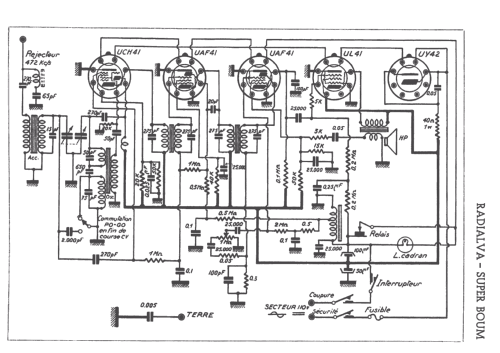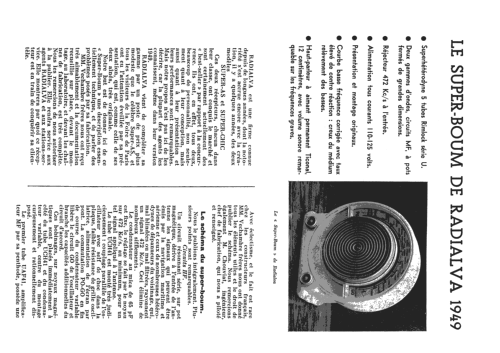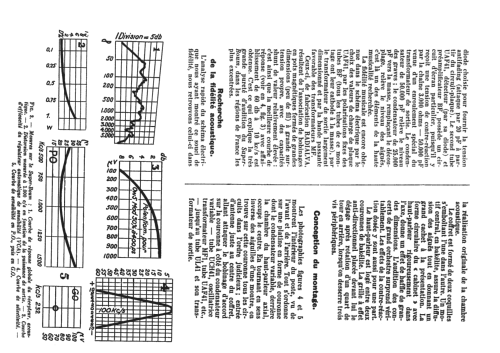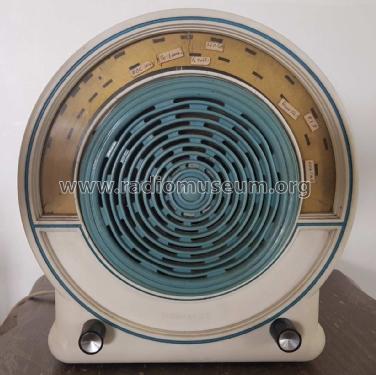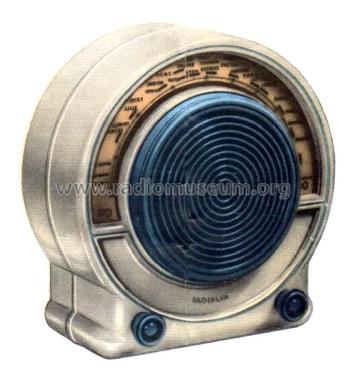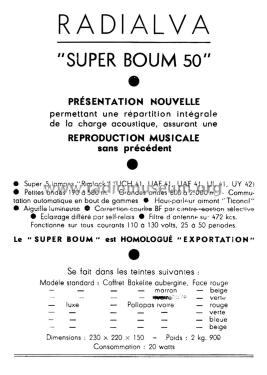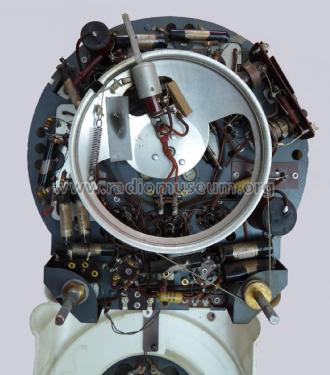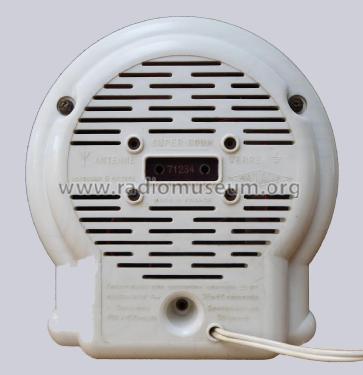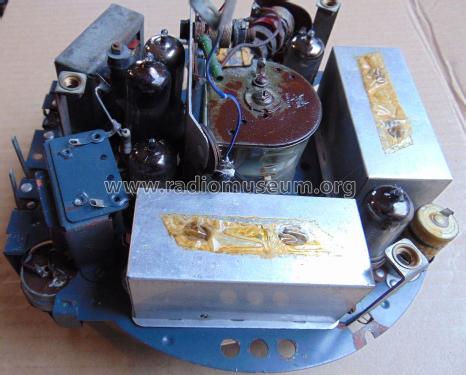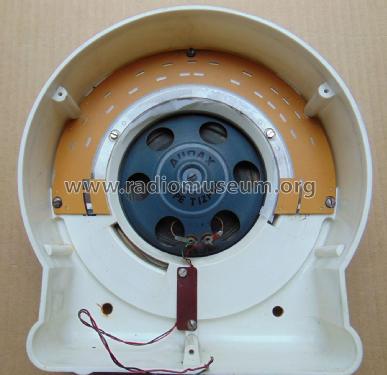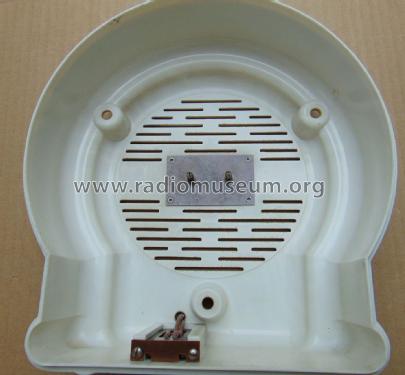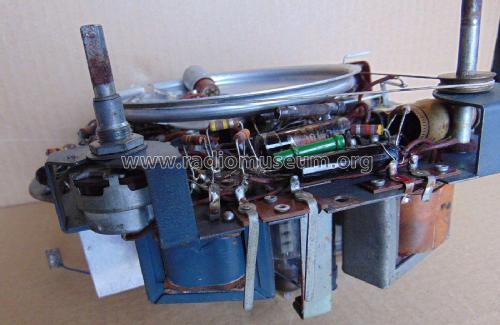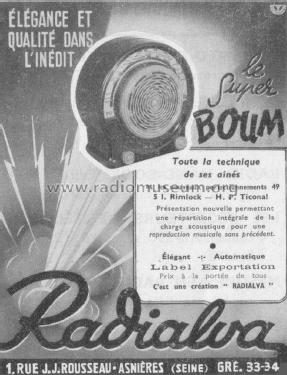Super Boum 50 luxe, pollopas
Radialva, Véchambre Frères; Asnières, Courbevoie, Saint-Denis
- Country
- France
- Manufacturer / Brand
- Radialva, Véchambre Frères; Asnières, Courbevoie, Saint-Denis
- Year
- 1949/1950
- Category
- Broadcast Receiver - or past WW2 Tuner
- Radiomuseum.org ID
- 305334
Click on the schematic thumbnail to request the schematic as a free document.
- Number of Tubes
- 5
- Main principle
- Superheterodyne (common); ZF/IF 472 kHz; 2 AF stage(s)
- Tuned circuits
- 6 AM circuit(s)
- Wave bands
- Broadcast (MW) and Long Wave.
- Power type and voltage
- AC/DC-set / 110-130 Volt
- Loudspeaker
- Permanent Magnet Dynamic (PDyn) Loudspeaker (moving coil) / Ø 12 cm = 4.7 inch
- Material
- Special material, described in the notes.
- from Radiomuseum.org
- Model: Super Boum 50 [luxe, pollopas] - Radialva, Véchambre Frères;
- Shape
- Design Radio or Novelty / Gadget - fancy or unusual shape.
- Dimensions (WHD)
- 220 x 230 x 150 mm / 8.7 x 9.1 x 5.9 inch
- Notes
-
2 gammes d'ondes : PO de 190 à 580 m, GO de 800 à 2000 m. Commutation automatique en bout de gammes. Aiguille lumineuse. Correction courbe BF par contre-réaction sélective.
Alimentation sur secteur tous courants 110 à 130 volts, 25 à 50 périodes.
Modèle luxe en coffret pollopas, teintes :
- coffret ivoire, face rouge
- coffret ivoire, face verte
- coffret ivoire, face bleue
- coffret ivoire, face beige
Voir aussi modèle Super Boum 50 standard en coffret bakélite.
- Net weight (2.2 lb = 1 kg)
- 2.9 kg / 6 lb 6.2 oz (6.388 lb)
- Mentioned in
- Le Guide du Collectionneur TSF Biraud/Foster, Vol. II (page 272)
- Literature/Schematics (1)
- Radio Constructeur et Dépanneur (1949)
- Literature/Schematics (2)
- -- Original prospect or advert
- Other Models
-
Here you find 191 models, 156 with images and 60 with schematics for wireless sets etc. In French: TSF for Télégraphie sans fil.
All listed radios etc. from Radialva, Véchambre Frères; Asnières, Courbevoie, Saint-Denis
Collections
The model Super Boum is part of the collections of the following members.
Forum contributions about this model: Radialva, Véchambre: Super Boum 50
Threads: 1 | Posts: 1
Im Gesamtprospekt "Recepteurs Radialva Saison 1950-51" bietet Radialva den Super Boum nunmehr in der Bestückung UCH42 UAF42 UAF42 UL41 UY42 an. Der Preis beträgt jetzt 11 900 Frs. Der Super Boum war damit das zweitbilligste Gerät der gesamten Palette von 9 Modellen und gehört jetzt zu den teuren Sammlerobjekten, wenngleich sich (inzwischen?) bei der Pollopasausführung auch Negatives zeigt: Im Innern des Materials sind je nach Lichtverhältnisse mehr oder weniger deutlich Schlieren zu sehen, verursacht durch die bei der Herstellung entstandene unterschiedliche Dichte.
Manfred Rathgeb, 15.Dec.20
